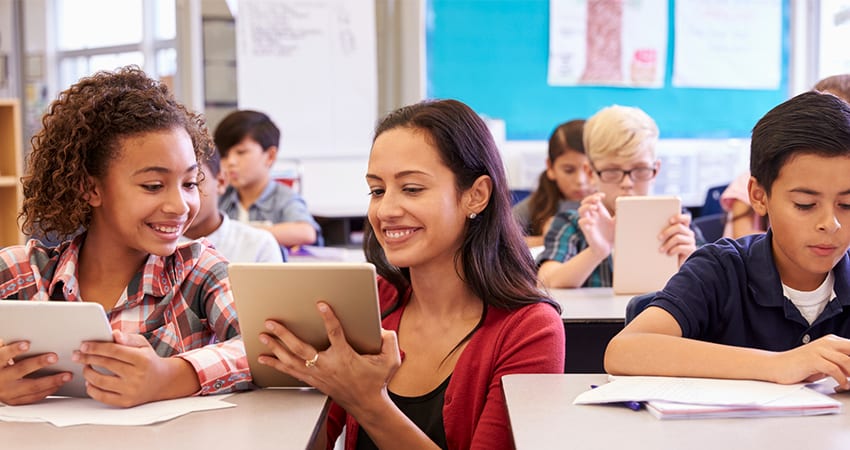If you’re lucky enough to have a 1:1 classroom, chances are you probably already have a few go-to techniques for helping your students access information digitally. Yet many teachers find that getting the most out of tech tools, and ultimately using them in a productive way, is easier said than done. Here are our best tips and tricks to turn your 1:1 classroom into a well-oiled digital machine.
Get up to speed.
- Be kind to yourself. If you are new to the 1:1 environment, it can be a big change with a steep learning curve. Set small weekly goals for improvement, and go easy on yourself if things aren’t improving as quickly or smoothly as you hoped.
- Take a cue from your colleagues. Use the advice you get from the teacher in the next classroom and tips from other educators who have found great ways to use tech tools in the classroom. Teacher Stephanie W.S. shares this roundup of her favorite tech tools.
- Tune in to your students for tips. The digital natives in your classroom may very well be the best teachers when it comes to knowing the capabilities of their devices and the software loaded on them. Don’t be shy about asking them to show you a thing or two.
- Take an online course. What better way to model the benefits of online learning than to take a course yourself? Capella University has a whole suite of free professional development courses for digital age classrooms.
- Google it! If you use Google Classroom, consider taking the Google for Education training courses to become more efficient and skilled with the tools.
- Crowdsource. Get tips that meet your specific needs from sites like Pinterest and follow professional thought leaders like @EdTech and @ISTE on Twitter.
Keep your classroom in control.
- Set some rules. Technology opens a world of possibilities…but it can also open a can of worms. Set some rules to keep your students safe, respectful and on task. Hang one or more of these free posters in your 1:1 classroom as a reminder of some of the basics.
- Declare a Device Day. Teacher Baily S. says, “We have iPad Fridays. Whatever math they are working on, I find an app that will reinforce the concepts. Students get to play on that app in small groups during class.”
- Charge it! Set up a routine for keeping devices charged and make sure your students follow it. Otherwise, you’ll be plagued with dead devices and spend too much time managing who gets to use which device and when.
- Feed the fast finishers. “I use our iPads after we finish our lesson as reinforcement,” says Kelly F. “When we are done with math and I have other students who are still working, I have my fast finishers practice math facts on their iPads with games.”
- Try a behavior app. Tools like ClassDojo connect parents, teachers and students in a community where positive reinforcement reigns. With ClassDojo, you can also let students showcase photos and videos to show their learning or share special classroom moments with parents to keep them connected.
- Teach students to be Super Digital Citizens. Share and discuss this video with your class to help them stay cyber-safe, respectful digital citizens.

Image credit: https://www.commonsensemedia.org/videos/super-digital-citizen
- Reorganize your classroom space. Move beyond the traditional classroom setup with rows of desks facing you at the front of the room. Wide-open spaces and small-group configurations foster movement and creativity in the classroom. According to EdTechMagazine.com, “Students are more engaged and perform better when school furniture and technology transform to create a more collaborative environment. Classroom designs have been shown to cultivate deeper and more student-centered learning encounters that are more flexible, active, mobile and fun.”
- Accessorize! Finding the right charging carts, covers, stands, headphones and cases may not be as much fun as shopping for just the right scarf or tie, but having those important accessories will help you keep your classroom technology safe and in good working order. Companies like Troxell even offer custom covers for your Chromebooks or iPads with your school colors and mascot.
- Think twice before taking out scrap paper. The next time you think about asking your students to take out a piece of paper, consider turning to your devices instead. While some tasks help students learn better using paper and pencil, there are times you might prefer to use technology. Small shifts like that can lead to a major transformation in the way you teach and the way your students learn. Plus, when you skip the paper, you save trees!
- Unplug every now and then. Turn the idea of 1:1 on its head by having students create a new use for their devices with old-school paper and pencil as their tools. Teacher Gareth C.T. recommends: “Spend a block of lessons where students don’t use technology but have to design an educational app on paper, discuss it with friends, parents, etc. I did it with a Dragons’ Den–style format (the U.K. version of Shark Tank).”
- Teach students about copyrights and fair use. Here’s another great animated video from Common Sense Media that explains the copyright law and how to use and reuse online work responsibly.
Manage your devices.
- Know your audience. Even highly rated tech tools and apps may not be a good fit for your students—and only you will know. Before trying them out in class, take a little time to review them with a super-critical eye. Does a math app have problems that are too easy or too hard for most of your students? What is the log-on process like—do you envision yourself needing to walk around to 25+ students to help them get started?
- Choose well. There’s so much out there—evaluating the choices can seem daunting. The Guide to Choosing Digital Content and Curriculum from the Center for Digital Education has some great advice.
- Don’t be afraid to swipe left. If you have an app (or two or 10) loaded on your classroom devices that sounded like a good idea at the time but didn’t turn out to be all that useful, swipe left/delete/clear it away. We promise you won’t hurt anyone’s feelings!

- Publish to a learning management system (LMS). Thankfully, the days of handing out photocopied worksheets, pages of reading material and a paper-based syllabus (that students invariably lose) are waning. Once you publish a unit to an LMS, your students have 24/7 access to the resources. The initial setup of a topic (e.g., photosynthesis or Shakespeare’s Hamlet), with background reading, links to additional resources, supporting videos, etc., can take a bit of time, but then it is available for years to come and can easily be updated. No more waiting endlessly for your turn at the copier.
- Get your head in the cloud! Storing lessons and materials in the cloud gives students access to information beyond the boundaries of your classroom. It also makes it easy to collaborate with classrooms (and educational peers) in other cities, states and countries. Check out OER Commons for a dynamic digital library of Open Educational Resources.
Create classroom activities.
- Build a book. Teacher Ursula V. says, “iPads are a great visual-learning tool—for mind mapping, quick research and representing students’ thinking visually, especially during discussions or note-taking. I use Book Creator throughout a unit for reflections—especially in science, humanities and literature with my 10- to 12-year-old group.”

Image credit: http://bookcreator.com/
- Check out PhET sims. Math teacher Susan M. likes to use interactive simulations designed by science, math and education researchers at the University of Colorado. She says, “They are geared toward both math and science and are designed to support construction of knowledge, not just review of skills. They are free (forever!). As a math educator and researcher, my favorites are Function Builder, Area Builder and Fractions!!”
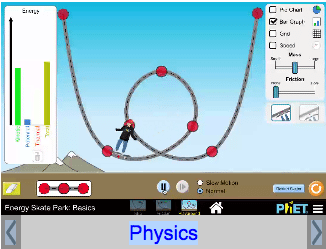
Image credit: phet.colorado.edu
- Gamify! You can turn just about anything into a game, and your students will thank you for it. Here are some games we like from MIT’s Education Arcade. Older kids can even create their own games and learn a thing or two about programming with Gameblox, while Classcraft turns your entire classroom into a game where collaboration, helping one another out and asking for help earn students extra points that move the game forward.
- Think visually. Help your students organize their ideas visually with mind-mapping apps like Popplet and Mindomo.
- Be content creators—not just consumers! Find out what kinds of content your students enjoy consuming the most and then propose that the class (or small groups) come up with their own original creation in the same format, whether it’s a video, series of captioned photos, a game or an audio recording of an original story.
- Collaborate! Teacher David W. has a 1:1 classroom and recommends, “Try a collaborative writing task where all students write on one document, editing and supporting one another.”
- Take note. Note-taking has come a long way with tools like OneNote, Notability and Evernote. Check out this roundup from Understood.org that will help you and your students pick the best tool for different learning styles:10 Apps to Help Kids With Note-Taking. ShakeUpLearning even offers the guide Collaborative Note-Taking With Google Docs.
- Start a blog. A classroom blog is a great way to engage students in a collaborative and creative endeavor that makes good use of the technology you have. Kidblog.org is a safe, simple and free way to get started.
- Fun with calculators. Take a look at GeoGebra for math apps, materials and downloads that offer an updated, visual way to teach and learn the concepts of geometry and algebra.

- Be a coding coach. Learning the basics of programming sounds intimidating for some of us, but tools like Scratch make it fun and easy to create stories, games, animations and more. Check out this TED Talk by Mitch Resnick for inspiration.
Build lessons.
- Flip your lessons. Everyone knows about Khan Academy, but why not record yourself teaching your own lessons with an app like Flipgrid and post it for your students to watch at home? The next day they can work on practice problems based on the lesson, or on whatever else you would normally assign for homework.
- Come up with learning objectives. Use the six levels of Digital Bloom’s Taxonomy—Create, Evaluate, Analyze, Apply, Understand and Remember—to come up with learning goals for your students. Need a refresher on what that means and how to go about doing it? Capella University has a free online professional development course, The 1:1 Environment in Action, which shows how you can easily connect the Digital Bloom’s verbs to the digital tools you have available in your classroom.
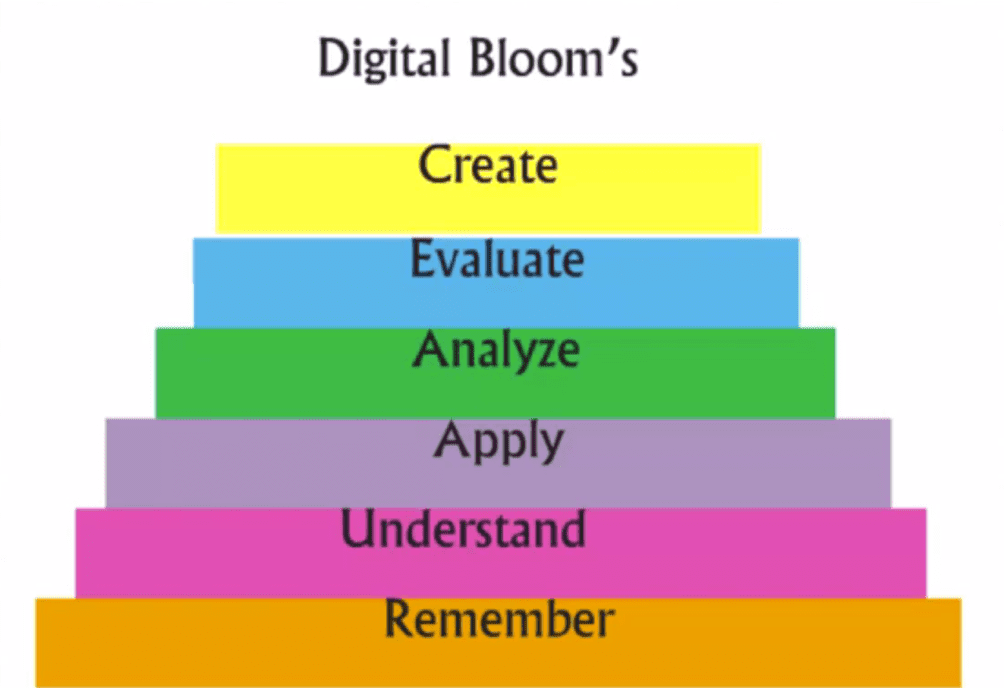
Image credit: Capella University
- Start with your essential questions. What are you trying to teach? By first clarifying the learning objective, you can then hone in on the best tool for imparting that knowledge. Here are some additional resources for understanding essential questions.
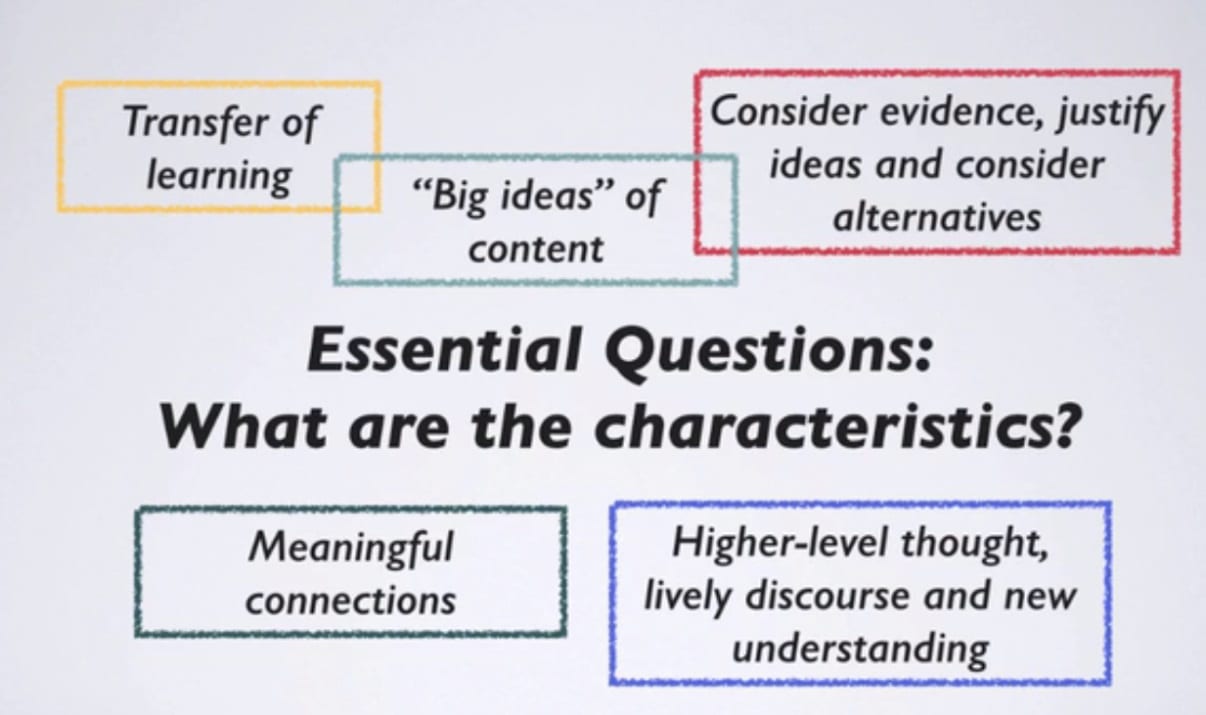
Source: Capella University
- Look for the TPACK sweet spot. When teaching a unit, look to find that perfect intersection of technological, pedagogical and content knowledge (TPACK). You can learn more about applying technology theories and models from Capella University’s free professional development course The 1:1 Environment in Action.
- It’s OK to get it all backwards. When it comes to your 1:1 classroom, beginning with the end in mind is actually a really great way to clarify your learning objectives. Backwards design encourages you to figure out the desired results and then decide how to assess and construct the lesson. This approach is one of the tenets of Understanding by Design (UbD).
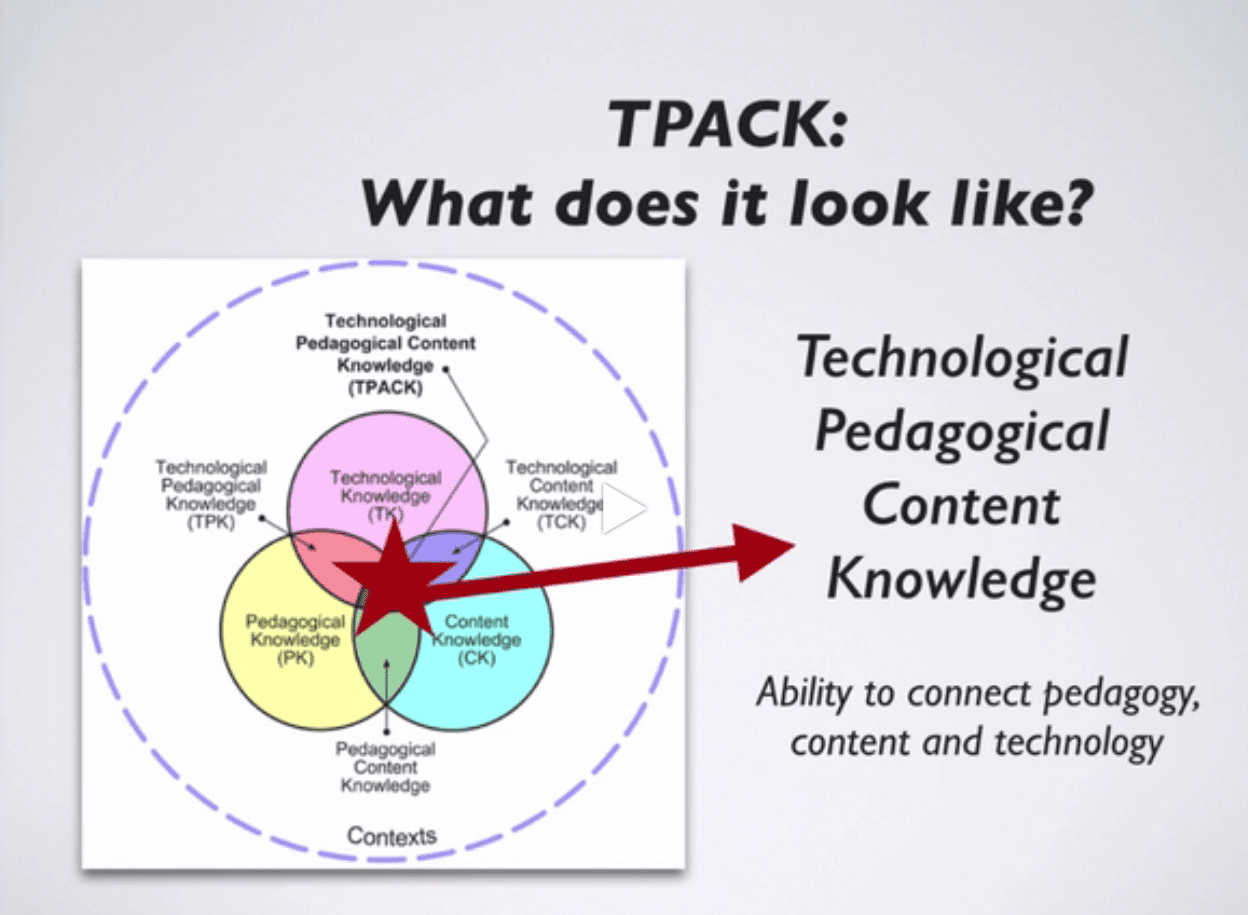
Image credit: Capella University
Check understanding.
- Use immediate feedback as a motivator. Include an interactive quiz or game that gives students immediate feedback. The Geddit app lets students make multiple-choice or short-answer responses on their devices. Use it to gain feedback during class or as an exit ticket. It’s a great way to engage students in the curriculum and keep them motivated.
- Poll your students. Use an app like to Poll Everywhere to sneak survey-type questions about the technology you’re using in class midway into a lesson and again at the end to solicit feedback from students. Their input will help you reach them even more effectively next time.
- Consider nontraditional approaches to grading. Excerpts from a recent #edchat on Twitter reveal some of the problems with traditional grading. A few alternatives that work well in a 1:1 classroom include digital portfolios, self-assessment, standards-based grading, rubrics and progress monitoring.
- Create your own quizzes. Students quickly see the value of Quizlet for creating their own quizzes as study tools, while teachers like the powerful features of Socrative for creating and tracking answers on quizzes in real time.
